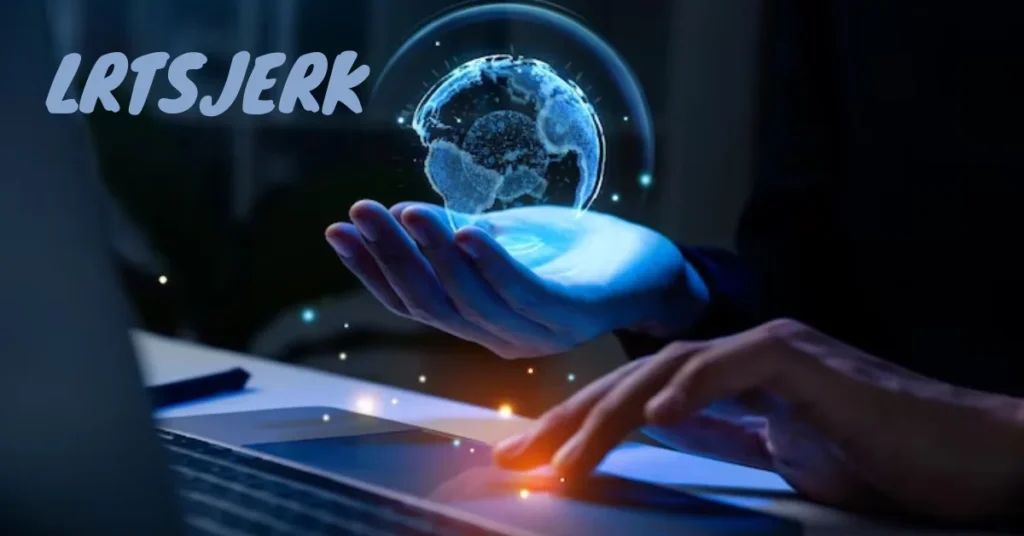Welcome to the digital age, where a new phenomenon has emerged – LRTSjerk. In a world driven by technology and social media, the rise of digital negativity is palpable. Let’s delve into the impact of LRTSjerk on our mental health, relationships, and society as a whole. Get ready to explore the darker side of the online world and discover ways to combat this growing trend for a healthier digital experience!
What is Digital Negativity?
In the digital age, negativity has taken on a new form – Digital Negativity. It refers to the toxic and harmful behavior exhibited online, from cyberbullying to spreading hate and misinformation. This phenomenon thrives in the anonymity of cyberspace, where individuals feel emboldened to unleash their negative thoughts without facing immediate consequences.
Digital Negativity can manifest in various ways, such as trolling, shaming, or inciting conflict. It can have detrimental effects on mental well-being by causing stress, anxiety, and even depression. Moreover, it can strain relationships and erode trust within communities.
The rise of social media platforms and advanced technology has exacerbated Digital Negativity by providing a fertile ground for its spread. The instant gratification of likes and shares fuels a cycle of seeking validation through negative behaviors.
To combat Digital Negativity effectively, it is crucial to practice digital detoxes regularly and prioritize self-care measures that promote positivity both online and offline. By fostering a culture of kindness and empathy in the digital realm, we can create a healthier environment for all users to thrive in.
The Psychology behind Digital Negativity
Have you ever wondered why digital negativity seems to have such a powerful grip on our minds? The psychology behind this phenomenon is complex yet fascinating. When we engage in negative online interactions, our brain releases stress hormones that can lead to feelings of anxiety and depression.
Furthermore, the instant gratification from receiving likes or comments on social media can create a cycle of seeking validation that only fuels more negative behavior. The anonymity provided by the digital world also plays a role, as people feel emboldened to say things they wouldn’t dare in person.
Moreover, constant exposure to curated images of perfection on platforms like Instagram can trigger comparison and self-doubt. This relentless comparison game can significantly impact our self-esteem and mental well-being. Understanding these psychological mechanisms is crucial in combatting digital negativity effectively.
How Social Media and Technology Contribute to LRTSjerk
In today’s digital age, social media and technology play a significant role in the rise of LRTSjerk. The constant exposure to curated lifestyles and highlight reels can create feelings of inadequacy and comparison among users.
Platforms like Instagram and Facebook often promote unrealistic standards, leading to increased pressure to conform or compete for validation. The instant gratification from likes and comments can reinforce addictive behaviors, fueling a cycle of seeking external approval.
Moreover, the anonymity provided by online interactions can embolden individuals to engage in negative behaviors they may not exhibit in person. This lack of accountability can result in cyberbullying, trolling, and spreading negativity without consequences.
The algorithm-driven nature of social media further exacerbates LRTSjerk by creating echo chambers that reinforce biases and filter out differing opinions. This polarization can lead to hostility towards opposing viewpoints, fostering a culture of divisiveness rather than healthy discourse.
Effects of LRTSjerk on Mental Health, Relationships, and Society
Let’s talk about the impact of LRTSjerk on mental health, relationships, and society. In today’s digital age, the constant exposure to negative content can take a toll on our mental well-being. The barrage of toxic comments and harmful comparisons can lead to increased stress, anxiety, and even depression.
When it comes to relationships, LRTSjerk can create rifts between individuals. Misunderstandings fueled by online negativity can strain friendships and romantic partnerships. Trust may erode as people struggle to navigate through the sea of hostility that permeates social media platforms.
Moreover, at a societal level, the prevalence of LRTSjerk contributes to a culture of cynicism and division. Instead of fostering empathy and understanding, digital negativity often breeds polarization and animosity among different groups in society.
It is crucial to recognize these effects and take steps towards promoting positivity both online and offline. By cultivating a supportive online community built on respect and kindness, we can counteract the detrimental consequences of LRTSjerk on our mental health, relationships, and society as a whole.
Ways to Combat LRTSjerk: Tips for Digital Detox and Self-Care
In the age of constant digital connectivity, combating LRTSjerk requires intentional efforts towards digital detox and self-care. One effective tip is to set boundaries with technology by designating tech-free zones or times during the day. This allows for moments of peace and reconnection with oneself.
Engaging in offline activities like reading a book, going for a walk, or practicing mindfulness can help break the cycle of excessive screen time. Prioritizing real-life interactions over virtual ones fosters deeper connections and reduces feelings of isolation that often accompany digital negativity.
Taking breaks from social media platforms can also be beneficial in managing LRTSjerk. Unplugging for a period allows space for introspection and recalibration of priorities. Practicing self-care activities such as exercise, meditation, or hobbies nourishes both mind and body amidst the noise of online chatter.
Finding a balance between our digital lives and real-world experiences is key to combatting LRTSjerk effectively.
The Future of LRTSjerk and the Importance of Balance in the
As we look ahead, it’s clear that LRTSjerk is here to stay in our digital landscape. However, understanding its impact on mental health, relationships, and society allows us to take proactive steps towards combating its negative effects.
Finding a balance between our online and offline lives is crucial. Embracing digital detox strategies, practicing self-care routines, and being mindful of our online interactions can help mitigate the harmful consequences of LRTSjerk.
By fostering a healthier relationship with technology and social media, we pave the way for a more positive digital experience. Let’s strive for a future where we harness the benefits of connectivity while safeguarding our well-being against the tide of digital negativity.
FAQs
Q: What is LRTSjerk?
Ans: LRTSjerk is a term that describes individuals who engage in a high volume of negative behaviors online, such as harassment, trolling, and cyberbullying.
Q: How did the term LRTSjerk originate?
Ans: The term LRTSjerk is a fusion of “lots” and “jerk,” highlighting the excessive and disruptive negative behavior exhibited by some individuals online.
Q: Why has LRTSjerk become more prominent recently?
Ans: LRTSjerk has gained prominence due to the increase in online interactions and the rise in incidents of online harassment and cyberbullying.
Q: How can we combat LRTSjerk behavior online?
Ans: Combating LRTSjerk behavior involves promoting positive online interactions, reporting abusive behavior, and supporting anti-cyberbullying initiatives.
Q: What impact does LRTSjerk have on online communities?
Ans: LRTSjerk behavior can create a toxic environment, leading to increased stress, anxiety, and a decline in the quality of online interactions and community engagement.







